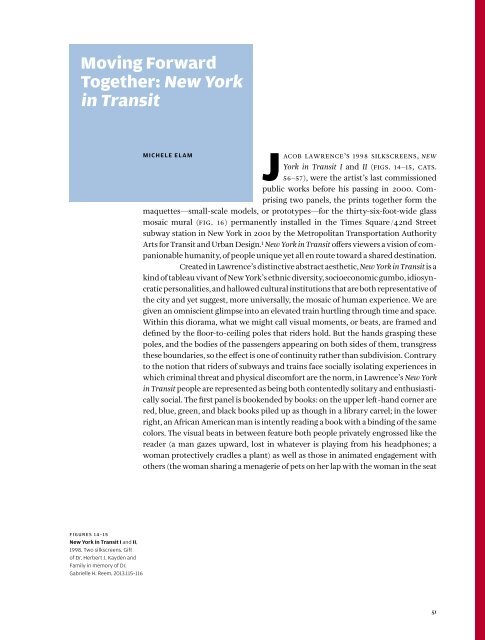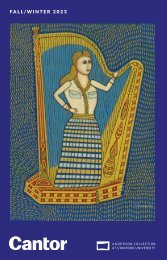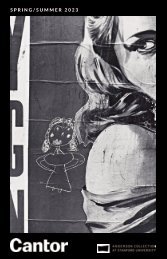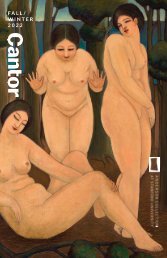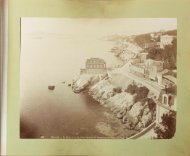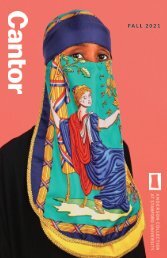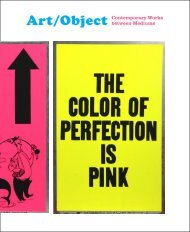Exhibition Catalog | Jacob Lawrence
Explore a gift of drawings, prints, and paintings by African American modernist Jacob Lawrence addressing Black history and civil rights, public life, faith, and creativity.
Explore a gift of drawings, prints, and paintings by African American modernist Jacob Lawrence addressing Black history and civil rights, public life, faith, and creativity.
Create successful ePaper yourself
Turn your PDF publications into a flip-book with our unique Google optimized e-Paper software.
Moving Forward<br />
Together: New York<br />
in Transit<br />
MICHELE ELAM <strong>Jacob</strong> lawrence’s 1998 silkscreens, new<br />
York in Transit I and II (figs. 14–15, cats.<br />
56–57), were the artist’s last commissioned<br />
public works before his passing in 2000. Comprising<br />
two panels, the prints together form the<br />
maquettes—small-scale models, or prototypes—for the thirty-six-foot-wide glass<br />
mosaic mural (fig. 16) permanently installed in the Times Square /42nd Street<br />
subway station in New York in 2001 by the Metropolitan Transportation Authority<br />
Arts for Transit and Urban Design.¹ New York in Transit offers viewers a vision of companionable<br />
humanity, of people unique yet all en route toward a shared destination.<br />
Created in <strong>Lawrence</strong>’s distinctive abstract aesthetic, New York in Transit is a<br />
kind of tableau vivant of New York’s ethnic diversity, socioeconomic gumbo, idiosyncratic<br />
personalities, and hallowed cultural institutions that are both representative of<br />
the city and yet suggest, more universally, the mosaic of human experience. We are<br />
given an omniscient glimpse into an elevated train hurtling through time and space.<br />
Within this diorama, what we might call visual moments, or beats, are framed and<br />
defined by the floor-to-ceiling poles that riders hold. But the hands grasping these<br />
poles, and the bodies of the passengers appearing on both sides of them, transgress<br />
these boundaries, so the effect is one of continuity rather than subdivision. Contrary<br />
to the notion that riders of subways and trains face socially isolating experiences in<br />
which criminal threat and physical discomfort are the norm, in <strong>Lawrence</strong>’s New York<br />
in Transit people are represented as being both contentedly solitary and enthusiastically<br />
social. The first panel is bookended by books: on the upper left-hand corner are<br />
red, blue, green, and black books piled up as though in a library carrel; in the lower<br />
right, an African American man is intently reading a book with a binding of the same<br />
colors. The visual beats in between feature both people privately engrossed like the<br />
reader (a man gazes upward, lost in whatever is playing from his headphones; a<br />
woman protectively cradles a plant) as well as those in animated engagement with<br />
others (the woman sharing a menagerie of pets on her lap with the woman in the seat<br />
FIGURES 14–15<br />
New York in Transit I and II,<br />
1998. Two silkscreens. Gift<br />
of Dr. Herbert J. Kayden and<br />
Family in memory of Dr.<br />
Gabrielle H. Reem, 2013.115–116<br />
51


